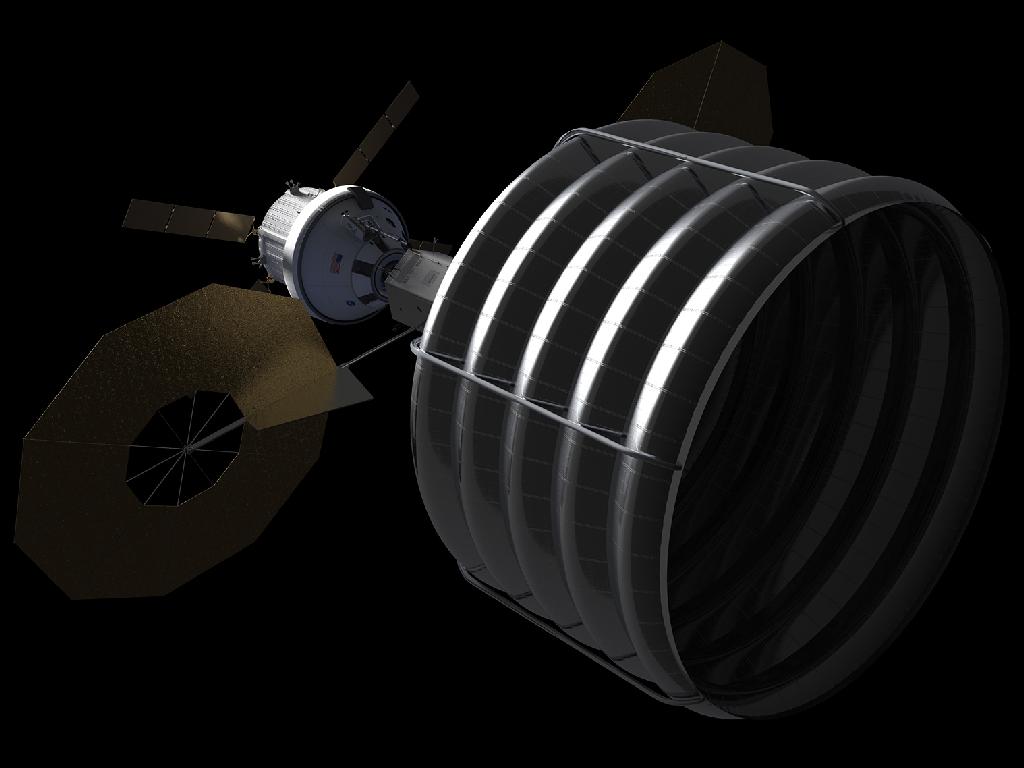Obama Seeks $17.7 Billion for NASA to Lasso Asteroid, Explore Space

NASA unveiled a $17.7 billion spending plan for 2014 today (April 10) that continues major ongoing space exploration projects, while including funds to kick-start an audacious new mission to capture a small asteroid and park it near the moon so astronauts can explore it by 2025.
The proposed NASA budget is part of President Barack Obama's 2014 federal budget request and would restore the U.S. space agency's funding back near its 2012 levels. The request is about $50 million less than NASA's last budget in 2012, but would restore deep cuts from sequestration, leaving the agency with a roughly $1 billion increase from the $16.6 billion spending bill the agency received for 2013.
NASA's plan to send a robotic spacecraft to lasso an asteroid and tow it to the moon is a stand-out item in the 2014 budget request. The goal is to capture an asteroid and bring it closer to Earth so that a manned mission can explore the space rock by 2025 — a major U.S. spaceflight goal set by Obama in 2010. [NASA's 2014 Budget Explained in Photos]
"We are developing a first-ever mission to identify, capture and relocate and asteroid," NASA chief Charles Bolden said in a statement. "This mission represents an unprecedented technological feat that will lead to new scientific discoveries and technological capabilities and help protect our home planet. This asteroid initiative brings together the best of NASA’s science, technology and human exploration efforts to achieve the president’s goal of sending humans to an asteroid by 2025."
How to catch an asteroid
NASA's 2014 budget sets aside a $78 million down payment for the asteroid-capture mission, as well as additional funds to search for the candidate space rock for the initial rendezvous and capture, bringing the total funding for the project to about $105 million in 2014.
In all, NASA could spend up to $2.6 billion on the asteroid-capture mission through 2025, according to a study conducted by scientists with Caltech's Keck Institute for Space Studies in Pasadena last year. That study reviewed the feasibility of robotically capturing a 500-ton asteroid about 23 feet (7 meters) wide and placing it in orbit near the moon by 2025.
Breaking space news, the latest updates on rocket launches, skywatching events and more!
Bolden said NASA's new mega-rocket, the Space Launch System, and its Orion deep-space capsule would be used for the manned portions of the asteroid capture mission. The agency will also "develop new technologies like solar electric propulsion and laser communications -- all critical components of deep space exploration."
The Space Launch System and Orion capsule are part of NASA's Exploration Systems division, which is funded at $2.7 billion in 2014 in the new budget, down from $3 billion in 2012.
In addition to the asteroid mission, NASA's 2014 budget includes continued funding for the International Space Station, as well as increased support for private space taxis, which the space agency plans to rely on to launch American astronauts to the space station now that its shuttle fleet is retired. Commercial spaceflight funding in 2014 is pegged at $821.4 million, just over twice the amount received in 2012.
Planetary science, astrophysics and Earth
NASA's planetary science projects, which took a significant funding hit last year, would stay at a $1.2 billion level in 2014 (down from $1.5 billion in 2012) under the new budget request. Astrophysics funding would dip slightly to $642.3 million (down from $648.4 million in 2012).
Bolden said the planetary science budget will allow NASA to continue operating its many spacecraft exploring planets across the solar system, including the flagship Mars rover Curiosity and its smaller, older cousin Opportunity. Future Mars missions, such as the Maven orbiter launching later this year, new Insight Mars lander launching in 2016 and next Mars rover launching in 2020 will also be funded, he added.
Earth science and space weather funding, however, would rise in 2014 in the new budget, with NASA seeking $1.84 billion for Earth science missions (up from $1.75 billion) to revamp the agency's long-lived Landsat Earth-monitoring satellite constellation and develop new climate sensors. The space agency's Heliosphysics division, which overseas space weather and sun-monitoring missions, would rise to $653.7 million in 2014, up from $644.9 million last year.
NASA's next major space observatory, the $8.8 billion James Webb Space Telescope, will continue under the 2014 budget request, receiving about $658.2 million. The observatory is due to launch in 2018 and serve as the successor to the Hubble Space Telescope, which will also receive continued funding in the 2014 request.
Email Tariq Malik at tmalik@space.com or follow him @tariqjmalik and Google+. Follow us @Spacedotcom, Facebook and Google+. Original article on SPACE.com.

Tariq is the award-winning Editor-in-Chief of Space.com and joined the team in 2001. He covers human spaceflight, as well as skywatching and entertainment. He became Space.com's Editor-in-Chief in 2019. Before joining Space.com, Tariq was a staff reporter for The Los Angeles Times covering education and city beats in La Habra, Fullerton and Huntington Beach. He's a recipient of the 2022 Harry Kolcum Award for excellence in space reporting and the 2025 Space Pioneer Award from the National Space Society. He is an Eagle Scout and Space Camp alum with journalism degrees from the USC and NYU. You can find Tariq at Space.com and as the co-host to the This Week In Space podcast on the TWiT network. To see his latest project, you can follow Tariq on Twitter @tariqjmalik.

